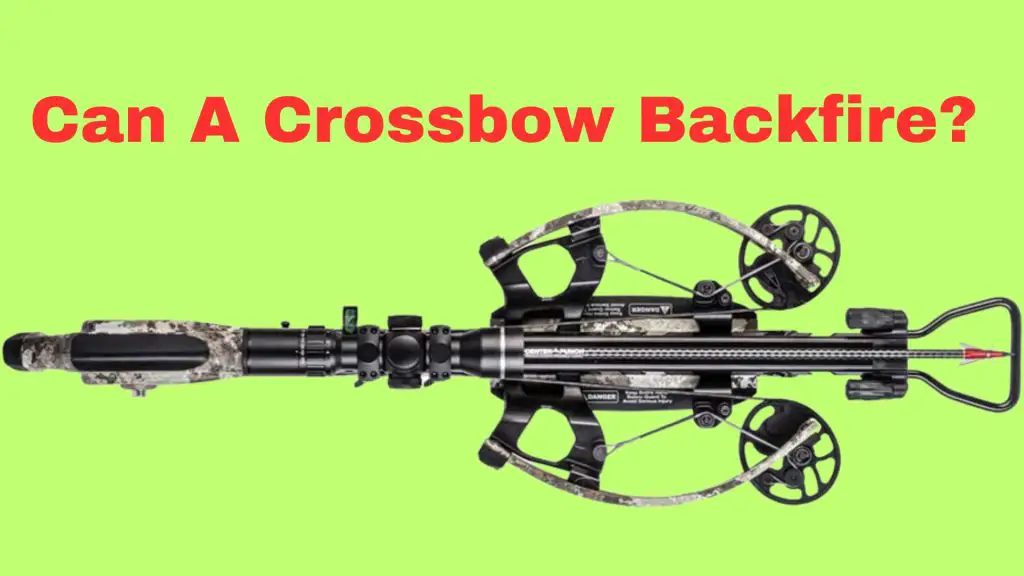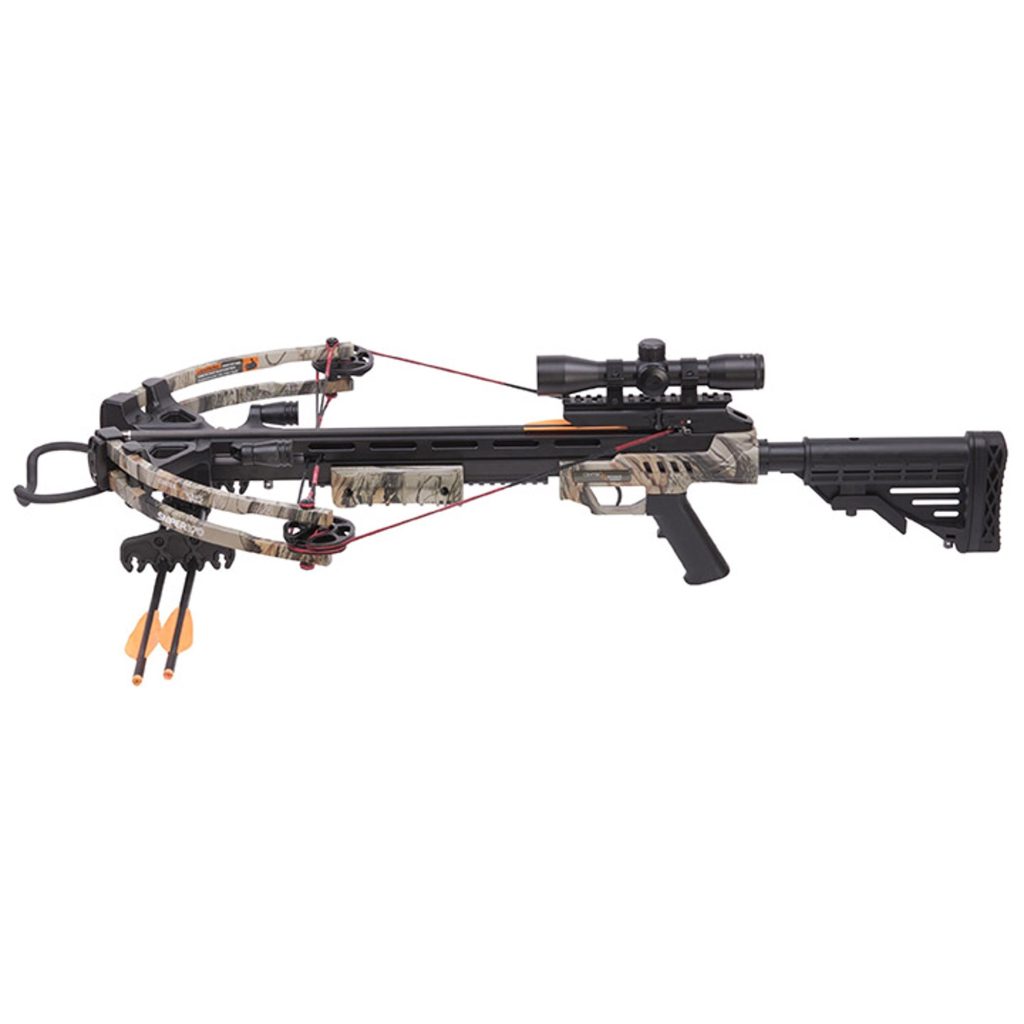Can a Crossbow Backfire!-Complete Guide
Welcome to the world of crossbows, where safety and precision are of the utmost importance.
While there is a lot to love about these powerful hunting tools, there are also some potential hazards to be aware of.
One question that often comes up is whether a crossbow can backfire. You may have heard different things from different sources, leading to confusion and uncertainty.
In this article, we’ll explore the truth behind crossbow backfires, including the risks, myths, and best practices for safe and successful crossbow use. Let’s dive in!

Quick Answer: It is important to note that crossbows do not backfire in the traditional sense, as they do not rely on powder-based firing mechanisms. While there are other potential injuries that can occur, they cannot be classified as injuries resulting from a backfire.
Crossbow Parts
Crossbow consists of a frame, limbs, a trigger mechanism, and a stock or handle. The limbs are made of a flexible material such as fiberglass or carbon fiber and are attached to the frame at the front and rear.
The bowstring is attached to the limbs and can be drawn back by the shooter using a mechanism called a cocking device. The trigger mechanism releases the bowstring when the shooter pulls the trigger.
In addition to this the crossbow shooting system typically includes a scope or other sighting device to help the shooter aim the crossbow accurately.
Some crossbows also come with a quiver, which holds bolts or arrows for easy access.
Now comes the bullet counterpart, as in the case of guns which is called bolts in case of crossbows.
Bolts, also known as arrows, are typically made of lightweight materials such as carbon fiber or aluminum.
The nock, or rear of the bolt, is fitted onto the bowstring, while the front of the bolt features a point or broadhead for piercing the target
How A Crossbow Is Shot
The user places the crossbow on a stable surface or holds it firmly, then uses the cocking device to pull back the string and latch it into place.
Once the string is drawn back, an arrow or bolt is loaded onto the rail and secured in place. The safety is engaged and the crossbow is aimed at the target.
When the trigger is pulled, the string is released and propelled forward by the limbs or cams, which are powered by a set of cables. The energy from the limbs or cams is transferred to the arrow or bolts, which are propelled forward at a high velocity towards the target.
Crossbow Backfire Myths
There are several misconceptions and myths surrounding crossbows backfire, which can lead to confusion and even dangerous situations.
Here are some of the most common myths:
Crossbows can explode like firearms:
This is a common misconception, but it is not true. Crossbows do not have gunpowder or an explosive charge, so they cannot explode like a firearm. However, if a crossbow is not maintained properly or is used improperly, it can malfunction and cause injury.
Crossbows are prone to misfire:
Crossbows are designed to be reliable and safe, but like any mechanical device, they can malfunction.
However, a misfire is different from a backfire. A misfire is when the crossbow fails to fire when the trigger is pulled. In this case, the bolt will not leave the crossbow and there is no danger of backfire.
Crossbow backfires are common:
While crossbow mishaps occur they cannot be called a backfire. Most crossbow accidents are the result of user error or improper maintenance, not backfire.
Crossbows are safe to use without proper training:
This is a dangerous myth. Crossbows are powerful weapons that require proper training and knowledge to use safely. Using a crossbow without proper training can lead to serious injury or death.
It is important to separate fact from fiction when it comes to crossbow backfire to avoid dangerous situations.
By following proper safety guidelines and maintaining your crossbow properly, you can minimize the risk of backfire and other accidents.

What are Common Crossbow Mishaps that can Happen?
Some common crossbow mishaps that can happen include:
Dry firing: This is when a crossbow is fired without an arrow loaded, causing damage to the bowstring, limbs, and other components.
Limb breakage: Crossbow limbs can break if they are overloaded, twisted, or damaged. This can happen during use or when the bow is stored improperly.
Bolt or arrow snap: This happens when the arrow or bolt shatters or breaks during firing or as a result of hitting a hard surface.
Accidental firing: If the safety mechanism is not properly engaged, a crossbow can accidentally discharge and cause injury or damage.
String derailment: This happens when the bowstring comes off the track, causing the arrow or bolt to fly off-course or the crossbow to malfunction.
Loose or damaged components: Over time, parts of a crossbow can loosen or become damaged, affecting accuracy and safety. It is important to regularly inspect and maintain a crossbow to prevent mishaps.
How to Prevent Crossbow Mishaps
To prevent crossbow Mishaps, it is important to follow these safety guidelines:
Read and follow the manufacturer’s instructions carefully: It is important to read and understand the manufacturer’s instructions before assembling or using your crossbow. The instructions will provide important safety information and help ensure that the crossbow is assembled correctly.
Inspect your crossbow before use: Before using your crossbow, check it thoroughly for any signs of damage or wear. Make sure all screws and bolts are tight and that the strings and cables are in good condition.
Use the correct ammunition: Always use the correct arrow type recommended by the manufacturer. Using the wrong ammunition can cause damage to the crossbow and increase the risk of backfire.
Do not overload the crossbow: Overloading the crossbow can cause it to malfunction and increase the risk of backfire. Always follow the manufacturer’s guidelines for the maximum draw weight and arrow weight.
Keep your fingers away from the trigger until you are ready to shoot: Keeping your fingers away from the trigger until you are ready to shoot can help prevent accidental firing and reduce the risk of backfire.
Practice proper maintenance: Regularly maintain your crossbow, including cleaning, lubricating, and inspecting it for damage. Proper maintenance can help reduce the risk of backfire and prolong the life of your crossbow.
Conclusion
While the term “crossbow backfire” may be a misnomer, it is important to recognize the potential risks and take necessary precautions when handling a crossbow.
Following proper safety protocols and best practices, such as using high-quality equipment and regularly inspecting your crossbow, can significantly reduce the likelihood of mishaps or accidents.
Remember, responsible crossbow usage not only protects you but those around you as well. So, always stay aware, alert, and cautious while enjoying the thrill of crossbow hunting or target shooting.
You might be interested in
